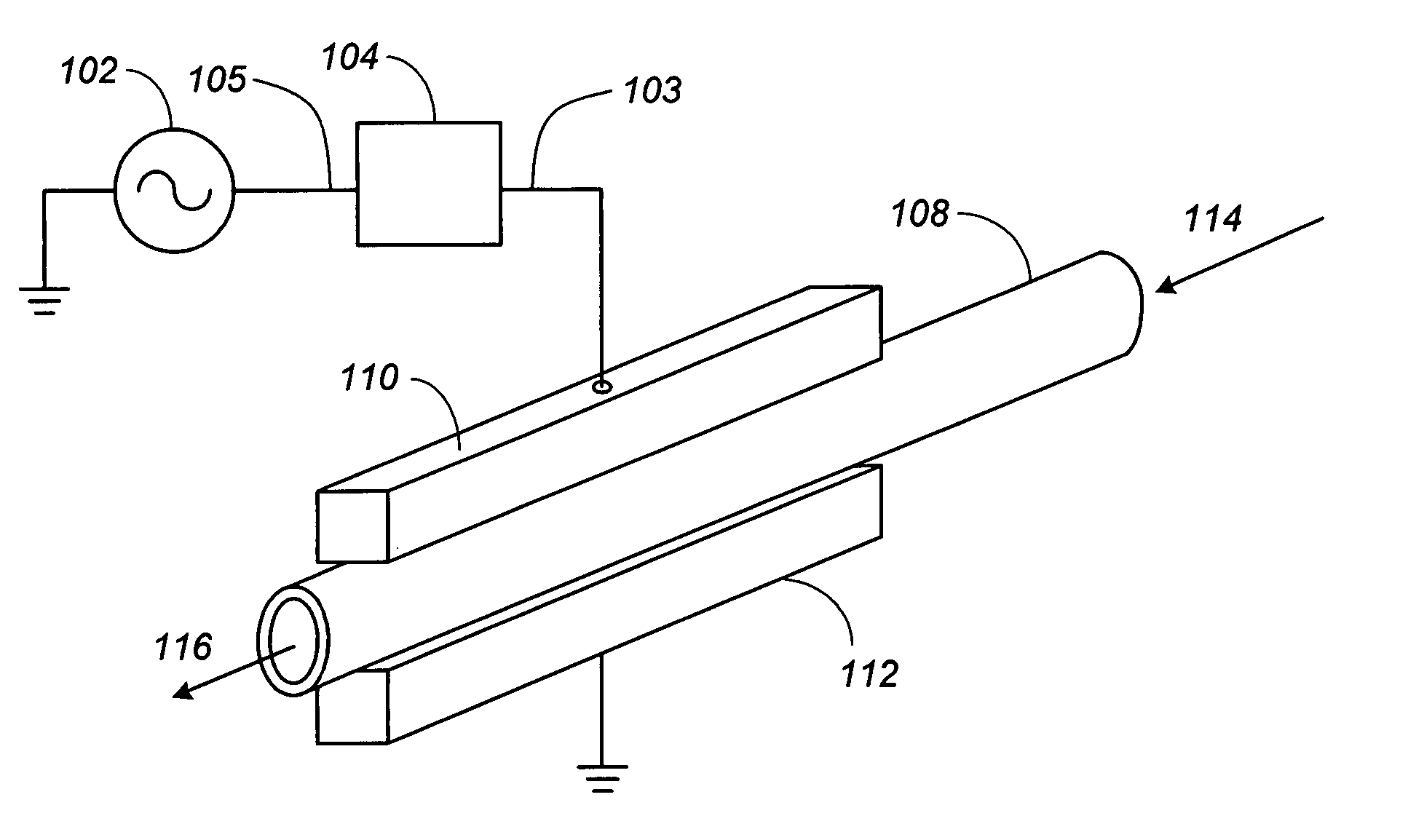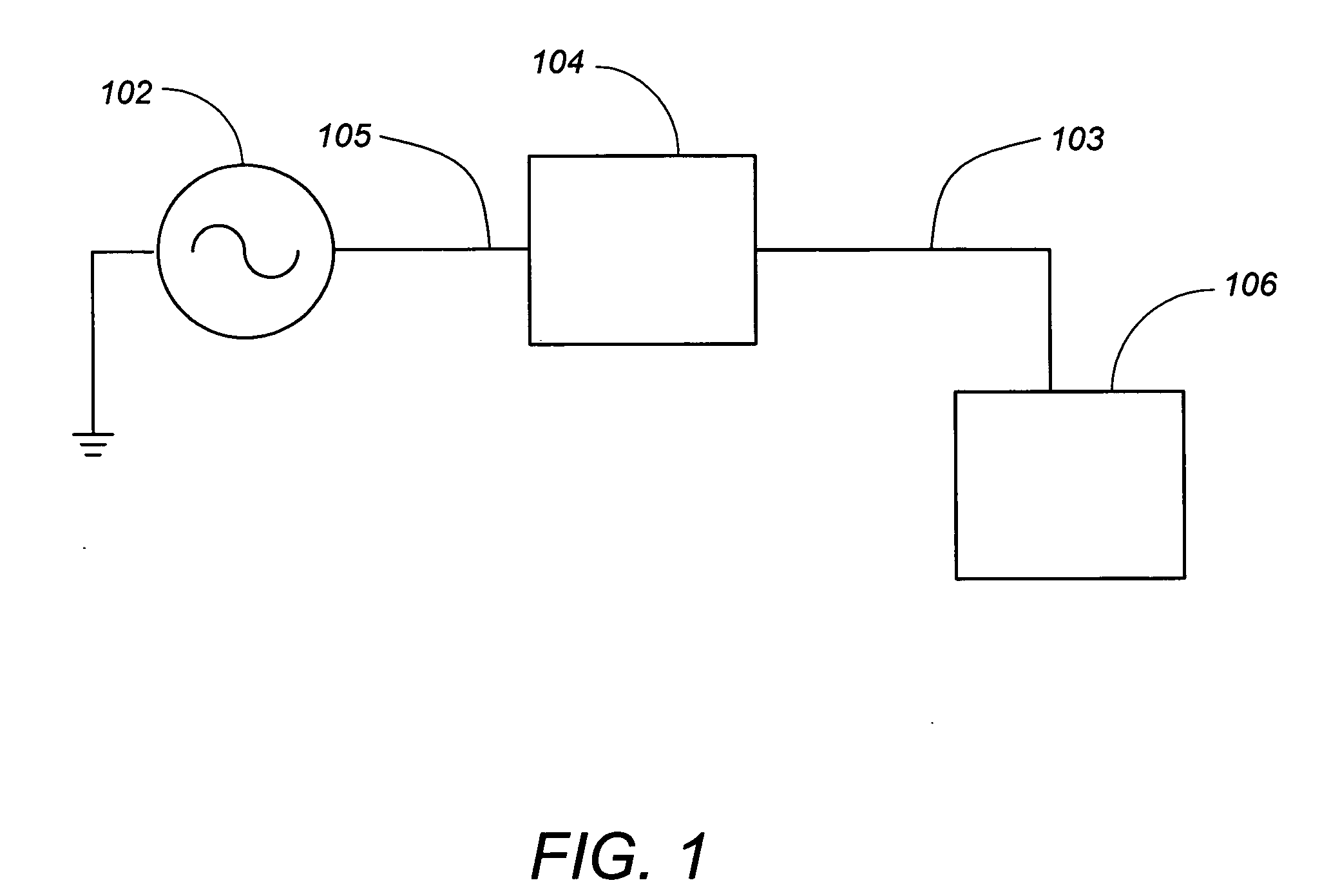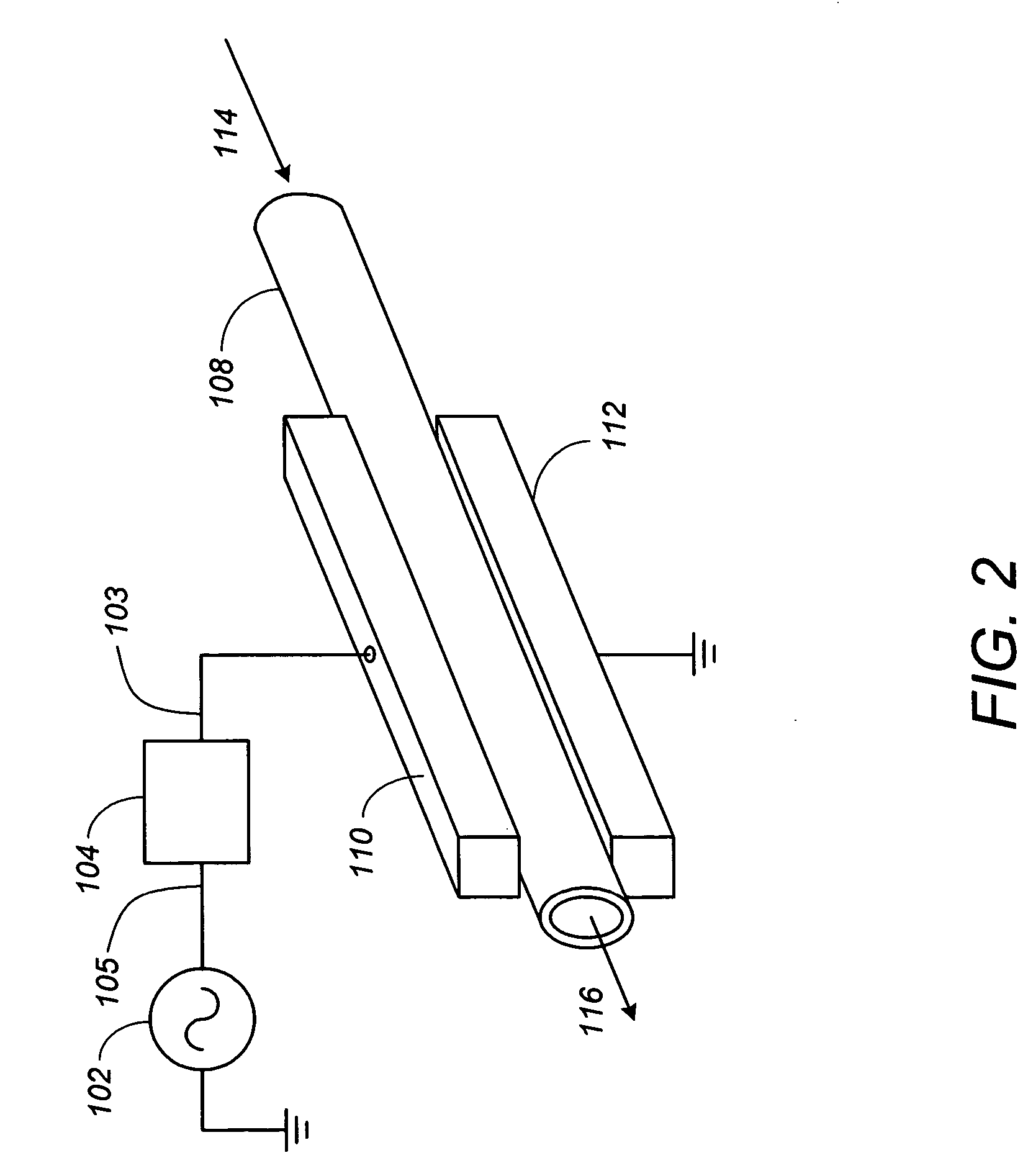Low temperature, atmospheric pressure plasma generation and applications
a plasma and atmospheric pressure technology, applied in the field of plasma generation methods and apparatuses, can solve the problems of contaminating the material being treated, electrodes can be sputtered away, arcs are not easily scaled up to treat large areas, etc., and achieve the effect of reducing power inputs and efficient coupling of electrical power into electrodes
- Summary
- Abstract
- Description
- Claims
- Application Information
AI Technical Summary
Benefits of technology
Problems solved by technology
Method used
Image
Examples
example 1
[0060] As an example of how one may practice the present invention, the apparatus shown in FIG. 2 was used to etch polyimide films. A mixture of argon and 5.5 volume percent oxygen was fed into a quartz tube, 3.0 mm in diameter, at a total flow rate of 4.6 L / min. Power was supplied to one of the electrodes at 13.56 MHz, while the other electrode was grounded. In the first experiment, the length of the discharge zone was 1.0 inch, and the power input was 90 W. The polyimide was placed 2.5 mm away from the end of the tube, yielding a gas temperature at this position of about 290° C. An etch rate through the polymer of 1.3 microns per second was obtained. In the second experiment, the length of the discharge zone was 2.5 inches, and the power input was 130 W. The sample was placed 1.0 cm away from the end of the tube, where the gas temperature was approximately 290° C. In this case, the etching rate of the polyimide film was 4.2 microns per second. These rates may be ...
example 2
[0061] Silicon films were etched using the low temperature atmospheric pressure plasma depicted in FIG. 2. A quartz tube, 3 mm in diameter, was used in this experiment, and the length of the discharge zone was 2.5 inches. The plasma was fed with 5.0 L / min argon and varying amounts of carbon tetrafluoride (CF4) between 0.5 and 2.3 volume percent. Upon applying 160 W / cm3 to the gas volume between the electrodes, a discharge was struck that yielded an extremely bright green glow. A silicon wafer was placed 1 cm downstream of the outlet of the quartz housing, and the plasma beam was allowed to impinge on the wafer for several minutes. Afterwards, the depth of the hole etched into the wafer was measured with a Deptak profilometer. The results of this experiment are presented in FIG. 12. A silicon etch rate of about 2.0 microns per minute was achieved with 0.5 volume percent CF4, whereas between 1.0 and 2.0 volume percent CF4, the etch rate averaged 1.3 microns per minute....
example 3
Surface Activation
[0063] Another example of how one may practice the present invention is to modify the surface of plastic or other materials. For example, the discharge can be used to change the wettability of the surface. In this case, a hydrophobic material can be processed to become more hydrophilic or visa versa by treating it with oxygen or hydrogen plasmas. By making a plastic surface more hydrophilic, it can better accept paints or inks for printing, and glue for making strong adhesive bonds.
[0064] Plastic samples were treated with the apparatus shown in FIG. 2 under the following conditions: 5.0 L / min argon gas flow, 0.2 L / min oxygen gas flow, 200 W of power at 13.56 MHz, and a distance from the plasma outlet to the sample of about 1.0 cm. The plasma exposure time was 0.5 seconds. Before and after plasma treatment, the surface energy of each material was measured with Accu Dyne Test markers. It was found that the surface energies changed as follows: polypropylene increase...
PUM
| Property | Measurement | Unit |
|---|---|---|
| inner diameter | aaaaa | aaaaa |
| inner diameter | aaaaa | aaaaa |
| height | aaaaa | aaaaa |
Abstract
Description
Claims
Application Information
 Login to View More
Login to View More - R&D
- Intellectual Property
- Life Sciences
- Materials
- Tech Scout
- Unparalleled Data Quality
- Higher Quality Content
- 60% Fewer Hallucinations
Browse by: Latest US Patents, China's latest patents, Technical Efficacy Thesaurus, Application Domain, Technology Topic, Popular Technical Reports.
© 2025 PatSnap. All rights reserved.Legal|Privacy policy|Modern Slavery Act Transparency Statement|Sitemap|About US| Contact US: help@patsnap.com



